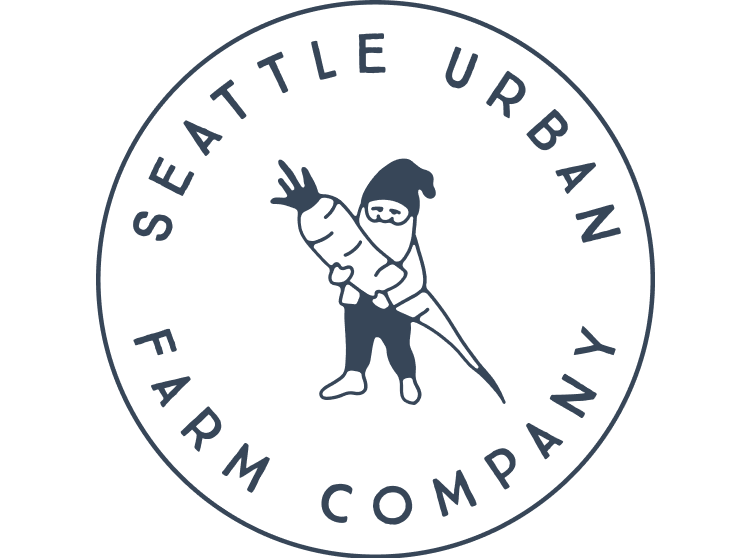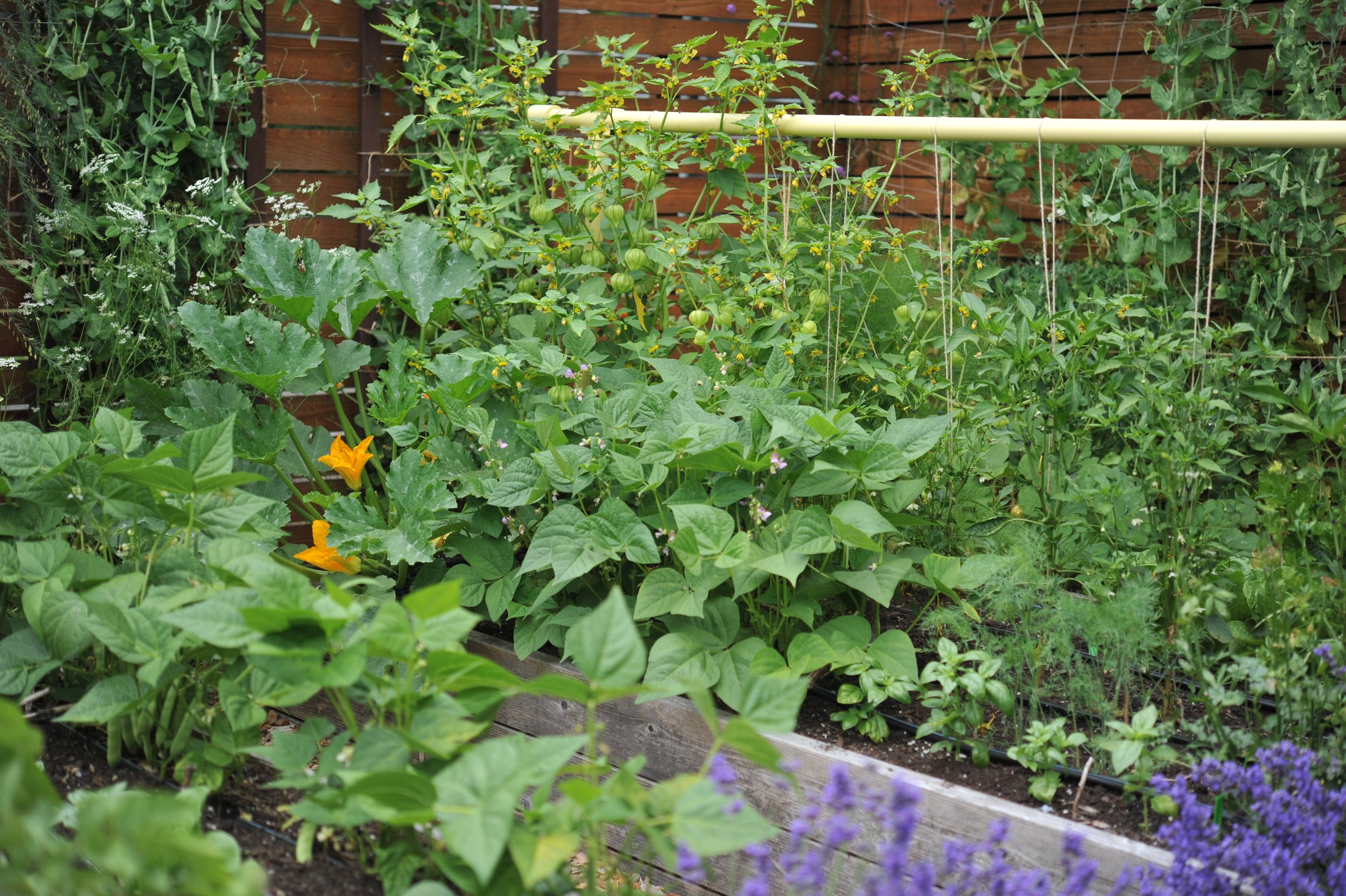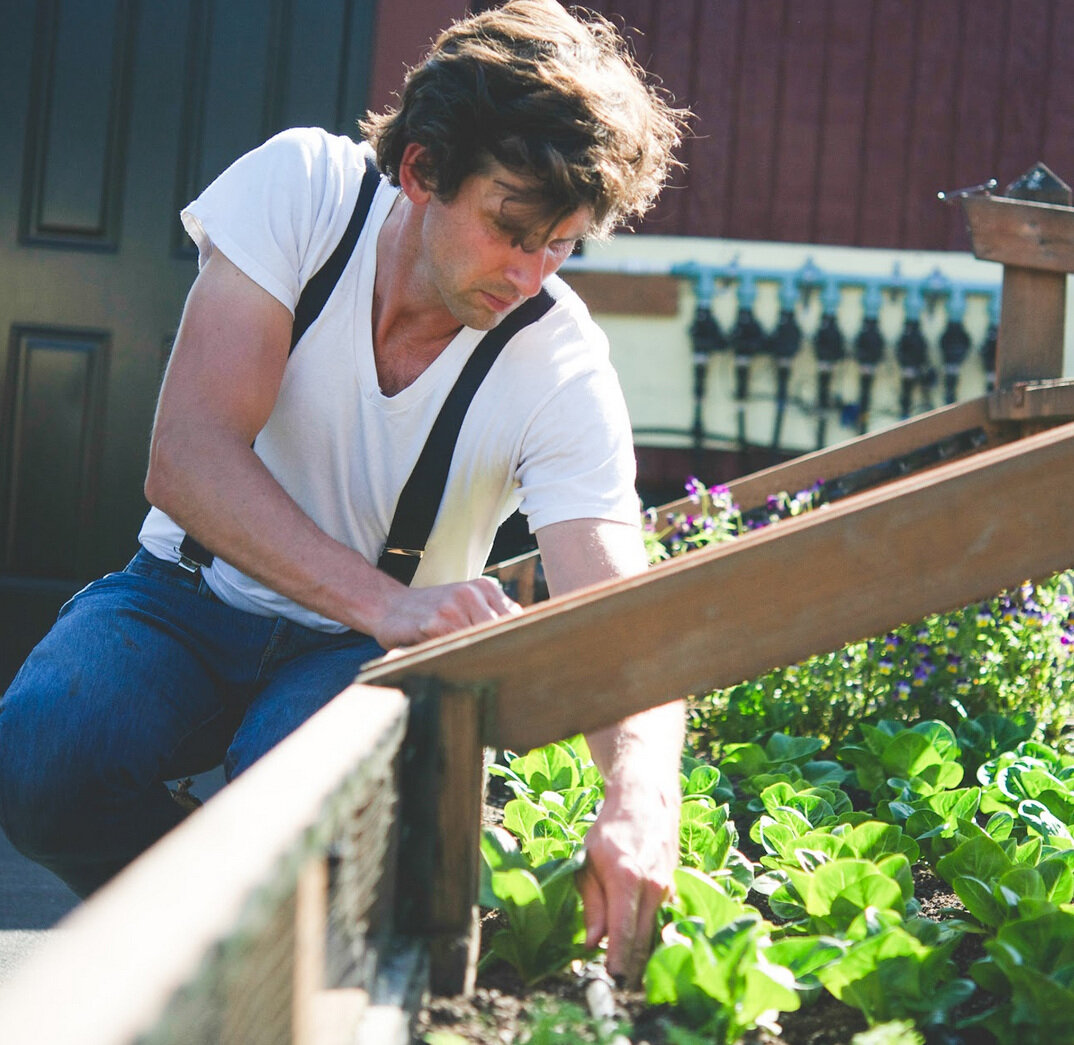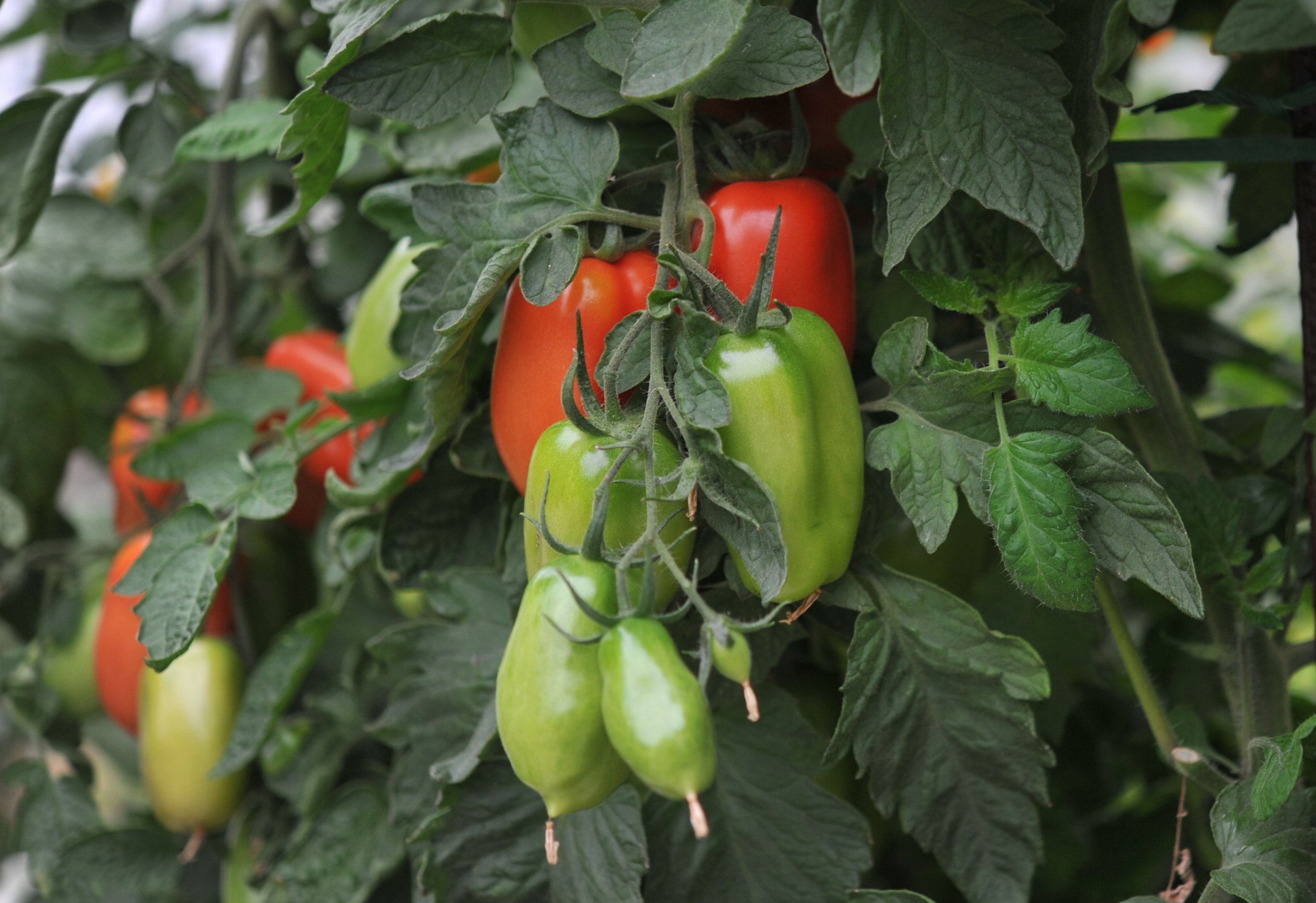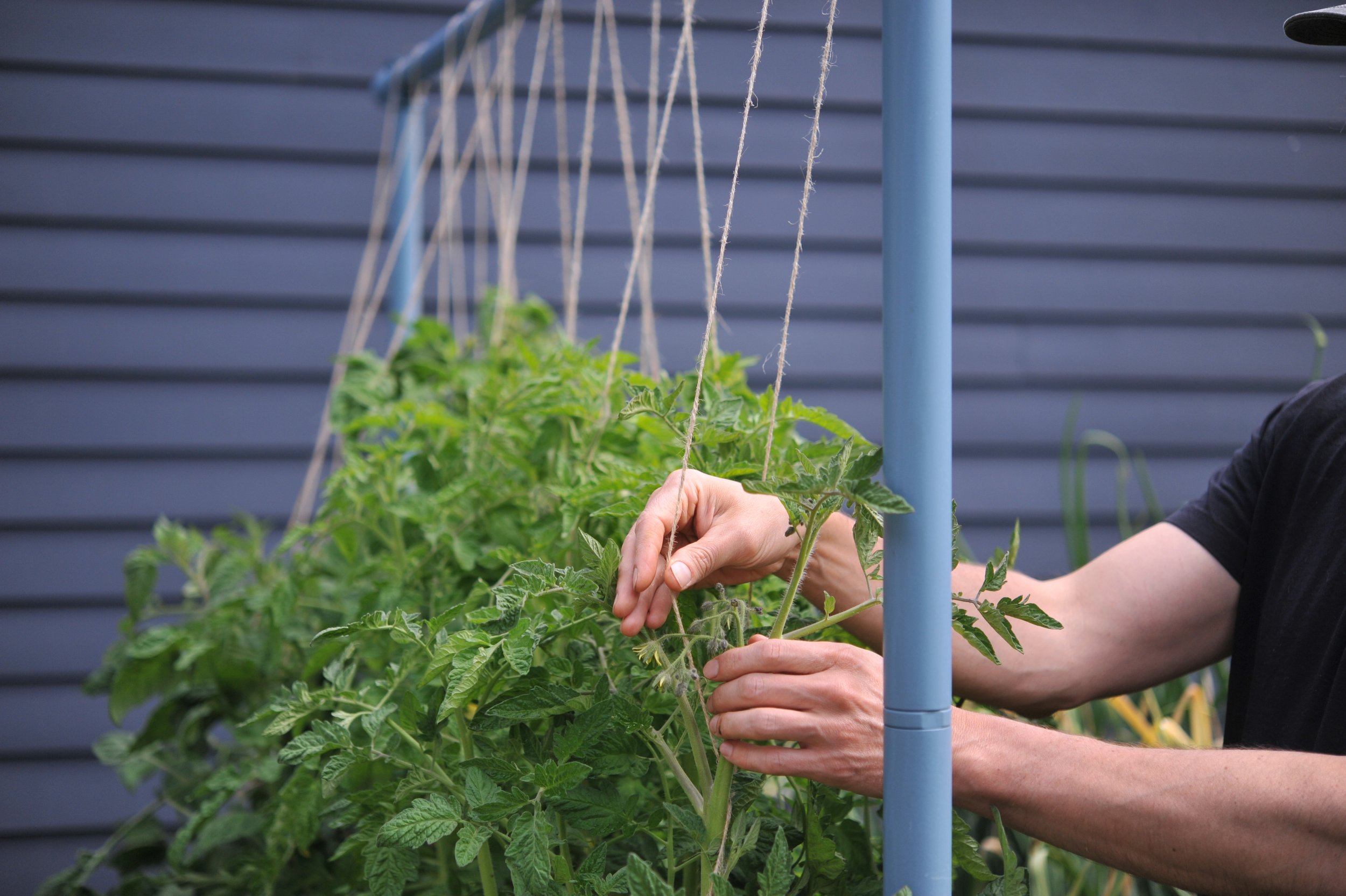Humus — what’s created when soil microorganisms break down raw organic matter — is an essential component for good garden soil. It acts as a “glue” to hold soil aggregates together and creates what growers call “tilth” (good soil structure). Humus gives garden soil a wonderful loose crumbly feeling, and it doesn’t completely collapse into individual particles when you work it.
Humus also acts like a sponge in your soil; it helps maintain proper moisture levels. In soil without humus, water will either leach away too quickly for plants to use (very sandy soil), or will make the soil waterlogged and difficult to work for long periods (very clay-rich soils). Humus-rich soil will take up water and hold it right where your crops can use it. As humus continues to break down, it releases nutrients that your crops can use to grow. Amazing stuff, that humus.
Humus breaks down, so its presence can only be maintained by adding organic matter to the garden on a regular basis. The easiest and fastest way to do this is to add compost. Because compost is already partially decomposed, it’s easily converted into humus. Also, the nutrients in compost have been stabilized, so they’re less likely to leach from the soil than from raw organic matter. Good compost also contains beneficial microorganisms, helping to keep the biotic community of your soil in good health.
It’s important to note, however, that not all compost is created equal. You might hear a recommendation such as “add X amount of compost to your garden each year, and you’ll be able to grow wonderful vegetables without adding any other fertilizers.” This might be true in climates with warm growing seasons and the highest quality compost, but does not hold true in every situation.
For example, compost made with horse manure will supply a different amount of nutrients than compost made with chicken manure, or compost made from plant material. Finished compost will begin to supply nutrients quickly, but compost that’s still breaking down may actually tie up nitrogen for a period of time because the soil bacteria are using it to process the organic matter.
Making your own compost can be a great way to ensure a high quality product, but is something we see many growers struggle with, especially in urban environments. If you don’t have access to quality feedstocks for your compost and a way to transport them (i.e. a truck), it can be difficult to build a top-notch pile. If this is the case for you, don’t worry. There’s nothing wrong with buying compost. Even if it’s only moderate quality, you can still have a great garden if you use organic fertilizers and soil amendments appropriately. And if your compost ends up being subpar, you can always try a different compost supplier next season.
Ideally you’ll be able to find a locally-made product made specifically for vegetable gardens. Avoid compost that is sold for use on ornamental beds as it’s likely to contain lots of high-carbon materials, like undecomposed wood and bark, which can reduce the availability of nutrients for your plants.
Obviously, a certified organic product will help ensure quality ingredients, but well-made compost does not need a certification to be a great product. Talk to the provider and learn how the product is made and what it is made from before loading it up.
Generally speaking, compost made with animal manure will provide more usable nitrogen, phosphorus, and potassium. Compost made strictly with plant waste is still a great source of organic matter, but will yield less of these nutrients. Here are a few additional items to consider when purchasing compost.
Wood Isn’t Good
Any compost made with large quantities of wood chips or sawdust is not suitable for vegetable production. In the short term, composts or other soil amendments that contain high levels of carbon — such as wood chips, bark or sawdust —will actually decrease nutrient availability in the soil. (It can be great for mulching around trees and perennials however.) Many landscaping companies and nurseries carry compost made with woody materials; make sure you don’t get the wrong product if you’re buying from these sources. These materials may be labeled as compost, but are more accurately described as mulch. The first year we ran our business, we unknowingly built all of our gardens using purchased compost with a lot of sawdust in it. Every crop in every garden grew poorly until we tested the compost and found out what was happening- no nitrogen!
Not Hot
Compost that is hot, steaming, or has a strong smell is probably not fully finished and could “burn” (either physically or with too many nutrients) plants. Fully finished compost will have any earthy, “soil-like” smell and feel. If you happen to buy unfinished compost, you can pile it up and turn it a few times until it breaks down and cools off. It’s also okay to add directly to the garden, but you’ll want to wait at least a few weeks to plant into these areas. We like adding compost to the garden in the fall to make sure it’s fully broken down before we begin planting in the spring.
This post is an excerpt from our latest book, Grow More Food :
